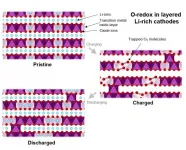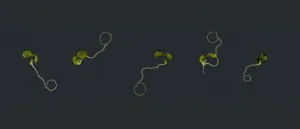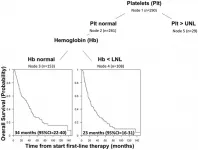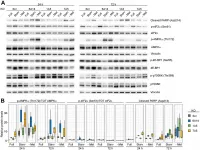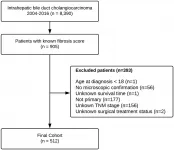(Press-News.org) CORVALLIS, Ore. - In tropical oceans, a combination of sunlight and weak winds drives up surface temperatures in the afternoon, increasing atmospheric turbulence, unprecedented new observational data collected by an Oregon State University researcher shows.
The new findings could have important implications for weather forecasting and climate modeling, said Simon de Szoeke, a professor in OSU's College of Earth, Ocean, and Atmospheric Sciences and the lead author of the study.
"The ocean warms in the afternoon by just a degree or two, but it is an effect that has largely been ignored," said de Szoeke. "We would like to know more accurately how often this is occurring and what role it may play in global weather patterns."
The findings were just published in the journal Geophysical Research Letters. Co-authors are Tobias Marke and W. Alan Brewer of the NOAA Chemical Sciences Laboratory in Boulder, Colorado.
Over land, afternoon warming can lead to atmospheric convection and turbulence and often produces thunderstorms. Over the ocean, the afternoon convection also draws water vapor from the ocean surface to moisten the atmosphere and form clouds. The warming over the ocean is more subtle and gets stronger when the wind is weak, said de Szoeke.
De Szoeke's study of ocean warming began during a research trip in the Indian Ocean several years ago. The research vessel was equipped with Doppler lidar, a remote sensing technology similar to radar that uses a laser pulse to measure air velocity. That allowed researchers to collect measurements of the height and strength of the turbulence generated by the afternoon warming for the first time.
Previous observations of the turbulence over the ocean had been made only by aircraft, de Szoeke said.
"With lidar, we have the ability to profile the turbulence 24 hours a day, which allowed us to capture how these small shifts in temperature lead to air turbulence," he said. "No one has done this kind of measurement over the ocean before."
Researchers gathered data from the lidar around the clock for about two months. At one point, surface temperatures warmed each afternoon for four straight days with calm wind speeds, giving researchers the right conditions to observe a profile of the turbulence created in this type of sea surface warming event.
It took a "perfect storm" of conditions, including round-the-clock sampling by the lidar and a long ocean deployment, to capture these unprecedented observations, de Szoeke said.
Sunlight warms the ocean surface in the afternoon, surface temperatures go up by a degree Celsius or more. This warming occurs during roughly 5% of days in the world's tropical oceans. Those oceans represent about 2% of the Earth's surface, about the equivalent of the size of the United States.
The calm wind and warming air conditions occur in different parts of the ocean in response to weather conditions, including monsoons and Madden-Julian Oscillation, or MJO, events, which are ocean-scale atmospheric disturbances that occur regularly in the tropics.
To determine the role these changing temperatures play in weather conditions in the tropics, weather models need to include the effects of surface warming, de Szoeke said.
"There are a lot of subtle effects that people are trying to get right in climate modeling," de Szoeke said. "This research gives us a more precise understanding of what happens when winds are low."
INFORMATION:
The research was supported by NOAA and the Office of Naval Research.
HARWELL, UK (1 March 2021) Scientists based at the University of Oxford as part of the Faraday Institution CATMAT project researching next-generation cathode materials have made a significant advance in understanding oxygen-redox processes involved in lithium-rich cathode materials. The paper, published in Nature Energy, proposes strategies that offer potential routes to increase the energy density of lithium-ion batteries.
"In the ever more difficult quest to make incremental improvements to Li-ion battery energy density, being able to harness the potential of oxygen-redox cathodes and the bigger improvements they offer relative to the nickel rich cathodes in commercial use today is potentially significant," Prof Peter Bruce, University ...
Childhood cancer and its treatment can result in cognitive struggles. Scientists atSt. Jude Children's Research Hospital are studying the risk factors. They looked at social and economic issues in children with brain tumors treated with radiation.
These patients have the greatest risk of cognitive problems. Scientists followed a group of St. Jude patients for 10 years. The children all had conformal radiation therapy.
For each patient, researchers looked at certain factors. These included the parent's job, education level, and whether it was a single parent home. The children were from different backgrounds.
The findings show social and economic status is linked to IQ, academics, attention ...
Amsterdam, March 1, 2021 - Comfort is a daily human experience central to the perception of our environment and the continuous processing of sensory input. Environmental factors such as smell, temperature and light can influence comfort, as can our interaction with products, such as the design of a chair or a mattress. Increasingly, researchers investigating the science of comfort and discomfort are focusing on the role of human behavior. A special supplement to the journal WORK presents the latest advances, from optimal seat design in offices and transportation to the influence of smell on comfort and the interaction between time and comfort.
"This special supplement adds unique findings to comfort knowledge. ...
A novel targeted immunotherapy approach developed by researchers at the Ludwig Center, the Lustgarten Laboratory, and Bloomberg~Kimmel Institute for Cancer Immunotherapy at the Johns Hopkins Kimmel Cancer Center employs new antibodies against genetically altered proteins to target cancers.
The researchers targeted their immunotherapy approach to alterations in the common cancer-related p53 tumor suppressor gene, the RAS tumor-promoting oncogene or T-cell receptor genes. They also tested the therapy on cancer cells in the laboratory and in animal tumor models. Their findings are reported in three related studies published March 1 in Science Immunology, Science and Science Translational Medicine.
Two ...
Scientists have identified that the COVID-19 virus could be transmitted through faecal contaminated river water.
A team of researchers, including water quality, epidemiology, remote sensing and modelling experts, led by Dr Jamie Shutler at the University of Exeter, have developed a fast and simple way to assess the potential risk of water-borne transmission of the COVID-19 virus, posed by sewage spills into open and closed freshwater networks.
The new study, published in the journal Environmental Science and Technology - Water, identifies the relative risk of viral transmission by sewerage spills, across 39 different counties.
The study used information on the environment, a population's infection rate, and water usage to calculate the potential potency of ...
Plants grow towards the light. This phenomenon, which already fascinated Charles Darwin, has been observed by everyone who owns houseplants. Thus, the plant ensures that it can make the best use of light to photosynthesize and synthesize sugars. Similarly, the roots grow into the soil to ensure that the plant is supplied with water and nutrients.
These growth processes are controlled by a hormone called "auxin", which plays a key role in the formation of polarity in plants. To do this, auxin is transported in the plant body polar, from the shoot through the plant body into the roots. In this process, a family of polar transport proteins distributes the auxin throughout the plant. To ...
The cover for issue 49 of Oncotarget features Figure 4, "CART-Tree analysis for overall survival in IMDC intermediate risk group," by Guida, et al.recently published in "Identification of international metastatic renal cell carcinoma database consortium (IMDC) intermediate-risk subgroups in patients with metastatic clear-cell renal cell carcinoma" which reported that as these patients have different prognosis, the aim of this study is to better characterize IR patients in order to better tailor the treatment.
A multivariable Cox model with backward selection procedure and a Classification and Regression Tree analysis were performed to identify which prognostic factors were associated to OS in IR patients.
Median OS for patients with ...
Oncotarget recently published "Exploiting the metabolic dependencies of the broad amino acid transporter SLC6A14" which reported that Tumor cells typically enhance their metabolic capacity to sustain their higher rate of growth and proliferation.
One way to elevate the nutrient intake into cancer cells is to increase the expression of genes encoding amino acid transporters, which may represent targetable vulnerabilities.
The Oncotarget authors analyze the pattern of transcriptional changes in a panel of breast cancer cell lines upon metabolic stress and found that SLC6A14 expression levels are increased in the absence of methionine.
Methionine deprivation, which can be achieved via modulation of dietary methionine intake in tumor cells, in turn leads to a heightened ...
Oncotarget recently published "Effect of liver fibrosis on survival in patients with intrahepatic cholangiocarcinoma: a SEER population-based study" which reported that the impact of fibrosis on overall and cancer-specific survival 12, 36, and 60 months following diagnosis, was evaluated in the entire cohort and in subgroups stratified according to treatment approach and the American Joint Committee on Cancer tumor stage using a Cox proportional-hazards model.
After adjusting for age, sex, race, year of diagnosis, AJCC stage, and surgical treatment strategy, advanced fibrosis was associated with worse cancer-specific survival across follow-up periods.
Similar effects were observed for overall survival.
Among patients that underwent surgical resection, ...
CHICAGO --- Public attitude toward COVID-19 and its treatments is more "infectious" than the disease itself, according to a new Northwestern Medicine study using Artificial Intelligence (AI) to analyze tweets about the virus. Researchers studied the influence of Twitter on COVID-19 health beliefs as well as the competing influence of scientific evidence versus the speeches of politicians.
The study's key findings:
People's biases are magnified when they read tweets about COVID-19 from other users, and the more times it has been retweeted, the more they tend to believe it and retweet it themselves.
Scientific ...

